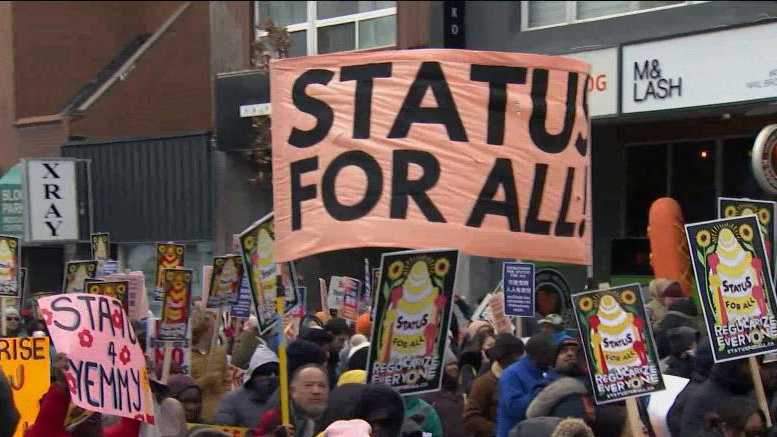Advocates respond to Canada’s new limit on migrant workers

Posted August 26, 2024 6:19 pm.
Advocates are saying that migrants are being scapegoated and blamed for the high cost of living in the country, following the government’s new announcement to limit the number of low-wage temporary foreign workers (TFW).
In response to criticism of a recent influx of TFW, the government is bringing back pre-pandemic rules that made it harder for businesses to hire low-wage workers from abroad and is also considering reducing its annual targets for permanent residency.
Migrant Workers Alliance for Change (MWA) says limiting low-wage TFW work permits will mean “workers will have to leave the country and pay vast sums of money to return.”
“Canada must focus on increasing rights and permanent resident status for migrants, not decreasing the numbers of migrants,” said Syed Hussan, executive director of the MWA, in a release.
The advocacy group says the government is blaming TFW for unaffordable housing, low wages, and high unemployment, whereas they say it’s caused by employer exploitation (with wages, low living standards, etc.) and policy failures.
“Most migrants live in employer-controlled housing, in cramped sub-standard conditions, and in student residences. The low wages they are paid and skyrocketing rents mean migrants are barely able to afford housing, not competing to buy single-family homes,” it said.
A Vancouver-based Immigration and Refugee Lawyer Will Tao tells 1130 NewsRadio that foreign workers are being exploited through low wages, wage theft, and human rights abuses, and says the “arbitrary caps” announced by the government on Monday won’t help solve those issues. However, Tao says he is not surprised by the announcement.
“This particular change seems to be very much precipitated by both an election coming and public opinion,” he said.
Tao also adds that he thinks the public discourse around immigration and foreign workers has taken a distinct turn towards xenophobia and racism.
“It’s not only now dealing with often oppressive and restrictive barriers of immigration systems, but also with just public opinion. I mean, even taking your kids out to the park now is becoming a possible site of racism,” Tao said.
Tao says the changes from Ottawa seem to be stopgap measures fueled by the upcoming election and he’s not sure how much research and consultation went into the changes.
He says the argument that immigrants are taking Canadian jobs is oversimplified.
“It seems to be an economist-driven argument combined with a visceral perception that, there are several folks in our community that are taking these positions…I think that’s a very oversimplified narrative and needs a lot more interrogation,” Tao said. “Why are those positions being taken by those folks? Do they have a choice in taking those positions?”
Effective Sept. 26, the government will refuse applications for low-wage temporary foreign workers in regions with an unemployment rate of six per cent or higher.
Employers will be allowed to hire a maximum of 10 per cent of their workforce from the temporary foreign worker program, down from 20 per cent.
Workers hired through the low-wage stream will be able to work a maximum of one year, down from two years.
There will be some exceptions to the rules for specific sectors such as health care and construction.
Immigration Minister Marc Miller said on Monday that the cabinet has not yet discussed lowering immigration targets, but that over the next few weeks, it will consider a wide range of options.
Canada is currently set to welcome 500,000 permanent residents in both 2025 and 2026, up from 485,000 this year.
-With files from The Canadian Press.








